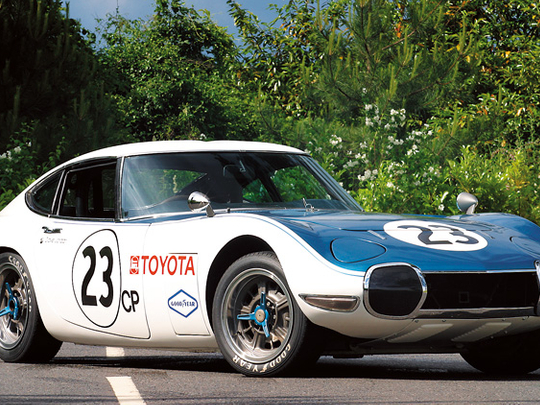
America and Europe have the classic and vintage car market pretty much to themselves. Look at any esteemed car auction and the big hitters, the million dollar works of art, are all Duesenbergs, Shelbys, Ferraris, Delahayes and Delages, plus a Horch or early supercharged Mercedes here and there.
For a Japanese car to cross into the seven-figure mark, it better have some serious racing history listed on its CV, or at least Richie Ginther's or John Surtees' name spelled out down the sides.
Japan entered the car industry quite late, getting serious only from the Thirties or thereabouts. And they got serious fora single reason; cheap mobilisation. That of course meant churning out innumerable runabouts powered by minuscule engines with price tags of three yen fifty.
Motoring in Japan wasn't about passion and racing (at least not until Soichiro Honda came along), it was simply about giving Japanese people the means to traverse their crowded islands. That's not good for classic cars. Look at old JDM machines and you're talking about Corollas, Cressidas, a Z car here and there, Laurels and Cedrics… Not too inspiring.
But one thing, one piece of automotive art, sticks out like The Great Wave off Kanagawa on a wall littered with your daughter's kindergarten scribblings. That car is Toyota's 2000GT.
Not only was a 1967 2000GT good enough for James Bond in You Only Live Twice, but the car is also famously inspired by the exquisite Jaguar E-Type, although of course with a Japanese twist. Unlike with the classically simpleE-Type, Toyota styled the 2000GT with some scattered lines spoiling the fluidic silhouette. That's one way to look at it, or you can just accept that it's orientally beautiful, in a typically Japanese industrial way. The wing-mounted mirrors are ghastly to some, but true to the car's JDM roots in that an unattractive functional piece becomes strangely attractive, because it's, well, purely functional.
Then there are the rectangular panels spoiling the car's sweeping front fender, but they're there to create handy accessibility. Toyota designers even wanted to retain a simple look by shunning bumpers, instead fitting most production models (the race cars didn't get them) with impact bars. The thing is, the contrasting black impact bars steal your gaze more than regular bumpers would, so the 2000GT manages to clutter even simplicity. And that's why we love it; it could only be Japanese.
The 2000GT is also possibly the only production Japanese car that fetches hundreds of thousands of dollars, in pretty much any shape. That's because you're not likely to find one in the first place, but if you do, the car is liable to be in good nick with minimal rust because it's made entirely of aluminium.
Power came from a 2.0-litre straight-six with a Yamaha head, meaning it revved sweetly but 150bhp was hardly enough for rivalling sportscars. Just 351 were made in total, which makes the 2000GT a whole lot rarer than a Series 1 E-Type. When new, the 2000GT was pricier than its rivals, and Toyota lost money on every single example sold. If you ever find one, make sure you don't walk away.











